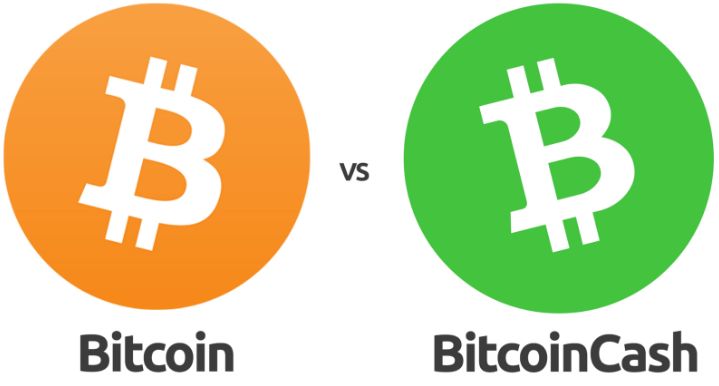The term ‘fork’ is encountered in various fields: from cryptocurrencies and programming to applications for televisions and even cyber threats. Despite the diversity of contexts, the essence of the word remains similar — it signifies a division, copying, or creation of a new version of something based on an existing one. In this article, we will explore in detail what a fork is, how it works in different areas, and why it is important to understand its meaning. If you want to grasp blockchain, Git, applications, or learn what a fork bomb is, this material will help you. We will explain everything in simple terms so that even beginners can easily understand the topic.

Fork — what is it in simple terms
What does the word ‘fork’ mean
The word ‘fork’ comes from English fork, which translates as ‘fork’ or ‘branch’. In everyday life, a fork is a tool with a split end, and in a figurative sense, a ‘branch’ denotes a point where something splits into two or more paths. In a technical context, a fork is the creation of a copy or a new version of something, whether it be software code, a blockchain, or an application, that then evolves independently of the original.
Initially, the term emerged in programming, where it indicated the splitting of a project into two versions. Over time, the word spread to other areas such as cryptocurrencies, operating systems, and even media players. In each case, a fork implies that a base — source code, rules, or structure — is taken, and then a modified version is created with new features, characteristics, or objectives.
Why one term is used in different fields
A fork as a concept is universal: it describes the process of dividing and creating something new based on the existing. This universality makes the term convenient for application in a variety of fields. For example, in programming, a fork allows developers to experiment with code without affecting the original project. In cryptocurrencies, a fork can lead to the emergence of a new coin with changed rules. In applications, a fork creates an alternative version of the program, often with improved functionality.
However, due to the wide usage of the term, confusion may arise. For instance, a fork in Git and a fork in blockchain are completely different processes, although they are united by the idea of separation. To avoid misunderstandings, it is important to consider the context in which the word is used. In this article, we will discuss the main areas of application of the term and explain their features.
What is a fork in cryptocurrency
Cryptocurrencies such as Bitcoin, Ethereum, or other assets available on exchanges MEXC, operate on the basis of blockchain — a decentralized technology that stores transaction data in the form of a chain of blocks. A fork in cryptocurrency is a change in the rules governing the blockchain, which can lead to the splitting of the chain into two different versions. Such changes often provoke heated discussions in the community, as they affect not only the technical side but also the economy and philosophy of the project. Let’s understand how this happens.
How a blockchain fork works
A blockchain consists of blocks, each of which contains information about transactions. All participants in the network, or nodes, must follow the same rules to maintain the integrity and consistency of the chain. A fork occurs when a part of the community decides to change these rules. The reasons for this can vary:
- Increasing transaction speed by changing the block size.
- Introduction of new features such as support for smart contracts.
- Fixing vulnerabilities or bugs in the protocol.
- Disputes in the community regarding the future of the project.
When new rules are incompatible with old ones, the blockchain splits into two chains. One continues to operate under the old rules, while the other uses the updated ones. Each chain becomes independent, and network participants—miners, developers, users—choose which one to support. Sometimes a fork results in the creation of a new cryptocurrency that begins trading on exchanges.
Hard fork and soft fork: what’s the difference
Forks in the blockchain are divided into two main types: hard fork and soft fork. They differ in the degree of changes and their impact on the network.
- Hard fork is a radical change of rules that is incompatible with the previous version of the blockchain. Nodes that have not updated their software will not be able to interact with the new chain. A hard fork often leads to the splitting of the blockchain and the emergence of a new cryptocurrency. For example, in 2017, part of the Bitcoin community decided to increase the block size to speed up transactions, which led to the creation of Bitcoin Cash. This is a classic example of a hard fork, where the new coin began trading separately from the original Bitcoin.
- Soft fork is a more gentle change that remains compatible with the old rules. Nodes that have not updated their software can continue to operate in the network, albeit with some limitations. A soft fork does not create a new chain, but simply modifies the existing one. A good example is the SegWit update in Bitcoin, which optimized the transaction structure without splitting the network.
Hard forks usually provoke more disputes, as they require all network participants to accept the new rules or remain on the old chain. Soft forks, on the other hand, are less contentious as they allow the network to continue operating in a unified format.
Notable examples: fork of Bitcoin, Ethereum, and others
Forks in cryptocurrencies often become landmark events that affect the market and attract the attention of traders. Here are a few notable examples:
- Bitcoin Cash (2017). In 2017, the Bitcoin community split due to disagreements about scalability. Some developers and miners wanted to increase the block size from 1 MB to 8 MB so that the network could handle more transactions. This is how Bitcoin Cash emerged as a separate cryptocurrency.
- Ethereum and Ethereum Classic (2016). The hard fork of Ethereum occurred after a hacker attack on The DAO project, during which a significant amount of Ether was stolen. The majority of the community decided to modify the blockchain to recover the stolen funds, but some participants remained loyal to the original chain, which was named Ethereum Classic. This fork became an example of ideological disagreements, where a technical solution confronted ethical questions and the immutability of the blockchain.
- Bitcoin SV (2018). This hard fork was based on Bitcoin Cash. A group of developers decided to increase the block size to 128 MB and bring the protocol closer to the ‘original vision’ of Satoshi Nakamoto. Bitcoin SV (Satoshi Vision) became another independent coin.

Forks in cryptocurrencies are not only technical changes but also social processes. They reflect disagreements within the community, struggles for influence, and different views on the project’s future. For traders and investors using platforms, forks represent both risks and opportunities. For example, after a hard fork, holders of the original coin often receive an equivalent amount of the new currency, which can increase their portfolio. However, price volatility during forks requires caution.
What is a fork in Git and programming
In the programming world, a fork is most often associated with the version control system Git and platforms like GitHub, GitLab, or Bitbucket. However, the term is also applied in other contexts, such as creating new distributions of operating systems or modified applications. Let’s understand how a fork works in programming and why it is so important.
Git repository fork: what it is and why
Fork in Git — is creating a copy of a repository (a set of files and change history), which allows you to work on a project independently from the original. On platforms like GitHub, the fork is created in your account, giving you complete freedom to make changes. The main reasons for forking are:
- Making changes to a project. If you want to add a new feature or fix a bug in someone else’s project, but you do not have direct write permissions, you can fork the repository, make changes, and propose them through a pull request (pull request).
- Creating your own version. A fork allows you to take a project as a basis and develop it in a new direction by adding unique features.
- Experiments. You can test new ideas or approaches without risking messing up the original code.
A fork is a powerful tool for collaborative development that underlies open-source projects. Thanks to forks, the community can improve programs by creating more efficient and functional versions.
How to fork a project
The process of creating a fork on GitHub is simple and takes just a few steps:
- Go to the page of the repository you want to fork.
- Click the button Fork in the upper right corner of the page.
- The platform will create a copy of the repository in your account.
- Now you can work with this copy: make changes, add new files, or experiment.
- If you want to propose your changes to the original project, create pull request through the GitHub interface, so the authors can review your edits.
After forking, you work with an independent copy, but you can synchronize it with the original repository if needed to get the latest updates.
Fork and clone: what is the difference
The terms “fork” and “clone” are sometimes confused, but they refer to different processes:
- Fork — is the creation of a copy of a repository on a server, such as GitHub. The fork resides in your account and is completely independent of the original. You can make any changes without affecting the original project.
- Clone — is the creation of a local copy of a repository on your computer. You can clone both the original repository and your fork to work with the code offline.
For example, you forked a repository on GitHub and then cloned it to your computer to start development. A fork is an action on the server, while a clone is on your device.
Forking a distribution and forking an application
Forking in programming is not limited to Git. This term is also used to refer to new versions of operating systems or applications created based on existing ones.
- Fork of a distribution. In the world of Linux a fork is the creation of a new distribution based on an existing one. For example, Ubuntu — is a fork of Debian, which adapted the base system for a wider audience. Linux Mint, in turn, forked from Ubuntu, adding its own interface and tools. Such forks allow developers to create systems focused on specific tasks or users.
- Forking an application. This is the creation of a modified version of the program based on its source code. For example, the Brave browser is a fork of Chromium, but with a focus on privacy, ad-blocking, and an integrated cryptocurrency system. Application forks often arise when developers want to add features that are not present in the original, or change the approach to monetization.
Forks in programming are the foundation for innovation. They allow developers to experiment, tailor projects to their needs, and share results with the community. However, it is important to respect the licenses of original projects to avoid legal issues.
Fork in other areas
The term ‘fork’ goes beyond cryptocurrencies and programming, finding application in the most unexpected fields. Let’s consider two examples: a fork player for TVs and a fork bomb as a cyber threat.
Fork player on a TV: what is it
ForkPlayer is a popular application for Smart TVs that allows you to watch content from the internet: movies, series, IPTV channels, and other media content. It is a fork of the original media player, modified to simplify access to online resources. The main features of ForkPlayer are:
- Support for public playlists for free content viewing.
- Ability to add custom links and playlists.
- Simple configuration for different TV models.
ForkPlayer has become popular due to its versatility and convenience. However, it is important to remember that using pirated content through such applications may violate copyright. For safe use, choose only legal sources.
Fork bomb: what is it and why is it dangerous
A fork bomb is a type of malicious script or program that creates an infinite number of processes in the operating system, overwhelming its resources. This leads to freezing or a complete system crash. A fork bomb exploits the forking mechanism—creating new processes—that exists in most operating systems, such as Linux or macOS.
Imagine a program launching two new processes, each of which launches two more, and so on. In just a few seconds, the system exhausts available resources, such as CPU time and memory. Fork bombs are dangerous for servers as they can crash them, disrupting the operation of websites or services.
To protect against fork bombs, system administrators impose limits on the number of processes a user can spawn. For example, in Linux, the command ulimit is used for this purpose. Users should also avoid running unknown scripts, especially from unverified sources.
How should we correctly say fork?
“To fork” sounds natural among developers and crypto enthusiasts, but may be confusing for those distant from technology.
- I forked the repository on GitHub to add a new feature.
- The Bitcoin blockchain was forked to create Bitcoin Cash.
Is it possible to use “to fork” officially?
The verb “to fork” belongs to colloquial speech and is more commonly found in informal discussions, such as on forums or in developer chats. In official documents, articles, or presentations, it’s better to use more neutral phrases, such as:
- Create a fork of the repository.
- Conduct a fork of the blockchain.
- Split the project.
Such expressions sound professional and are suitable for a broad audience. However, in technical communities, “to fork” is quite appropriate as it is concise and clear.
Synonymous words and their appropriateness
Synonyms for the word ‘fork’ depend on the context in which it is used:
- In programming: copy, branch, modification.
- In cryptocurrencies: split, update, fork.
- In applications: version, adaptation.
Choosing the right synonym is important to avoid confusion. For example, the word ‘copy’ in the context of Git may be inaccurate, as a fork implies not just copying, but creating an independent project. Similarly, in cryptocurrencies, ‘fork’ may sound overly emotional, while ‘split’ better conveys the technical essence.
Conclusion
A fork is a universal concept that underpins innovation and development across various fields. In cryptocurrencies, forks allow for the creation of new coins, such as Bitcoin Cash or Ethereum Classic, and to adapt blockchain for new tasks. In programming, forks give developers the freedom to experiment, improve projects, and create their own versions of software, as seen with Ubuntu or the Brave browser. Even in consumer technologies like Smart TVs, forks like ForkPlayer make content more accessible and convenient.
Understanding which fork is being referred to helps avoid confusion and better navigate the technical world. For traders on platforms like MEXC, knowledge about forks is important as they can influence cryptocurrency prices and open up new investment opportunities. For developers, forks are a way to contribute to open-source projects or create something unique. And for regular users, understanding forks makes technology more transparent and comprehensible.
Whether you are interested in cryptocurrencies, programming, or simply want to set up your TV, knowledge about forks will help you better understand modern technologies and use them beneficially, for example, when trading cryptocurrencies on MEXC!
Join MEXC and Get up to $10,000 Bonus!
Sign Up


